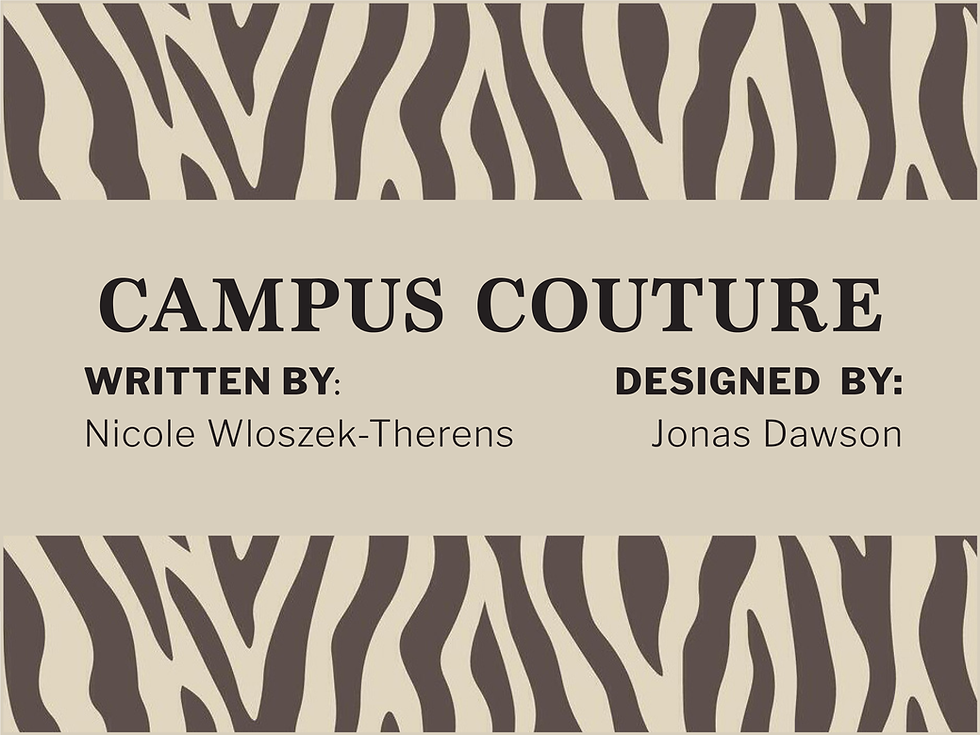The Real Trend-Setters
- Feb 11, 2022
- 3 min read
Trends created by the Black community that continue to influence the fashion industry at large.
Written by: Jillian VanDyke

Black culture holds high significance in fashion today, yesterday and tomorrow. You may be unaware of how some of your staple pieces came to be. The relationship between the Black community and pop culture trends is complicated due to the nuances of the trends’ cultural origins. Discussions of Black contributions to trends must respect the fine line between cultural appreciation and cultural appropriation, and avoid exploiting or tokenizing African American culture. Below are just some fashion trends with connections to Black icons in pop culture.
Acrylic Nails
The acrylic nail set you may be wearing as you scroll on your mobile device or flip through the pages of this magazine originated in 1950. Donyale Luna, the first African American woman on the cover of Vogue, made an iconic appearance in 1966 on the cover of Teen Magazine wearing a fresh set. Since then, artificial nails have only been gaining popularity, with people still habitually making appointments for fills today.
Monogram Print
The use of monograms has been popularized by many luxury purse brands such as Gucci, Louis Vuitton, and Coach. This trend began in the ‘80s and grew into more of a commonality in 1990 by luxury brands wanting to make their branding into a pattern. A lot of people, however, do not know that ‘Dapper Dan’ was screen printing monogram prints onto clothing items in a unique way never done before. Streetwear culture is something that has helped this trend stay strong with the continuation of monograms on pants and such.
Sneakers
Sneakers and streetwear gained popularity during the Black-led hip-hop movement of the 1970s. Each pair of sneakers has a niche story behind it. If you talk to any sneakerhead, they should be able to go into more detail about the creator and designer of the specific shoe. This created overall appreciation for the work across racial and ethnic communities. The Air Jordan 1985, however, was predominantly worn by kids of color. The explosion of signature basketball trainers birthed a generation of sneaker collectors, while the hip-hop scene elevated their credibility as symbols of status. So, "sneaker culture" became associated with young Black men, even though young Black men are far from the only ones to wear sneakers.
Hoop Earrings
In the jazz age, hoops were notably worn by American-born, Black French Jazz performer and civil rights activist Josephine Baker, an iconic figure in history who symbolized the beauty and vibrancy of Black culture in 1920s America. Baker became known for wearing large hoop earrings. Fast-forward to the 1960s, and hoops were a frequent day-to-day accessory for women of color during the Black Power movement, with many also choosing to wear and celebrate Afrocentric dress and natural hairstyles. They were also a popular style with both singers of color and white singers, including Diana Ross and Cher. This, in turn, led to the “statement” hoop of the 70s, which became widely associated with the disco and soul scenes (also driven by Black artists).
During the rise of rap and hip-hop culture in the 80s, hoops got thicker and grew in size, birthing the “door-knocker” and bamboo styles of hoops. In the 1990s, this trend evolved into large hoops with gemstones, nameplates or phrases that were worn by artists of color. Iconic artists such as Missy Elliott, Lil Kim, Aaliyah, Lauryn Hill, Eve and Eryka Badu all contributed to the popularization of hoops at this time and paved the way for the continuation of this trend, from the early 2000s to present day.






